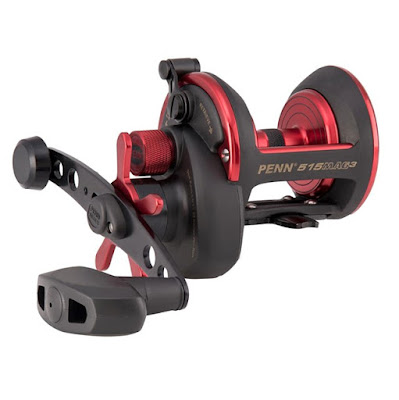 |
| Improve your Winter Cod Fishing |
There is no denying that standard beach fishing tackle will catch you a winter cod, but it must be capable of casting a big fishing bait and heavy lead weight.
 |
| Rough Ground Cod Fishing |
Rods rated 4oz (130g) and 5oz (150g) may be fine for field casting with only a 5oz sinker, but that doesn't mean they can handle that same lead weight and a heavy load of whole calamari squid plus lugworms or crab cart on a size 6/0 Pennell.
 |
| Crab Cart |
 |
| Squid |
So for the roughest weather, biggest baits and the longest distances go for an outfit capable of hurling 8oz.
The weight of the bait and terminal rig has a dramatic influence on casting distance.
It's a fact often forgotten by rod designers and distance-obsessed shore anglers. If you want to reach the fish and retain the effectiveness of your bait you will have to compromise and accept the limitations that bait size, wind and weather put on casting distance.
Cast too short with an over-large bait and even its scent may not be capable of attracting a fish into the shallows where they will not venture, while achieving long distances with a tiny scentless bait may only attract tiddlers. The aim must always be to cast a decent-sized bait as far as possible.
The first essential for casting large baits long is to streamline the bait and rig so that it offers the least resistance to casting. Do this by clipping down the baited hooks close behind the sinker and within its slipstream.
 |
| A Simple Baited Rig |
Rig and snood length can also have a small effect on the potential casting range and again you are looking for a compromise. Short snoods cast further, but they may also restrict the fish from taking the bait. Long snoods reduce casting range, but allow the bait to move more naturally when in the water.
Of the cod hook configurations the Pennell is a front-runner every time and its effectiveness is proved by the fact that marauding shoals of whiting will take longer to chew the bait back to the bare hook. A whole cuttlefish on a size 8/0 Pennell rig is the minimum to keep off the dogfish and whiting in many regions. However, there is another rig that is becoming more practical, and that’'s a trace designed to fish a livebait.
There are several ways to construct a livebait rig, although in the main a mono paternoster is most effective. The essence of the idea is that you fish a small baited hook for a small whiting and leave it out until a cod comes along and grabs this smaller fish.
This rig uses a larger hook tied close to the small baited hook to snare the cod. There are a couple of ways to do this but in all cases the bigger hook needs to be only a couple of inches away from the small one.
Some anglers tie a small size 2 hook on a short section of mono to a size 3/0 or 4/0 hook, while others tie a small hook above a large one in a fixed Pennell rig design. Either system works and in both cases the hooks should be clipped down for distance.
Our opinion is that two livebait hooks are better than one, although doing this involves using two hooks for each bait, meaning a total of four hooks on the rig, something not all anglers are prepared to do.
Obviously there is a degree of chance as to whether or not a cod takes the small fish and falls foul of the larger hook, so you might like to consider fishing with a second more traditional rig on another rod so that all the options are covered.
If you are planning your next Cod fishing trip, don't forget that we have a massive selection of beach fishing tackle at fishingmegastore. And if you fish in the East Coast, don't forget you can shop for all your essentials at Edinburgh Angling Centre.
This article was brought to you in association with Sea Angler Magazine.

 Greys GR100S Beach Rod
Greys GR100S Beach Rod




Comments
Post a Comment